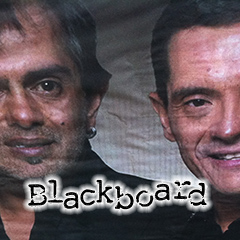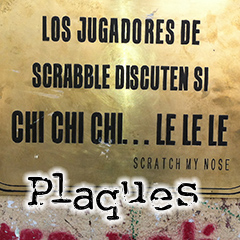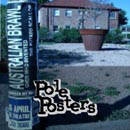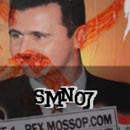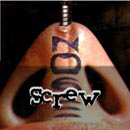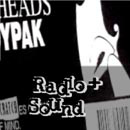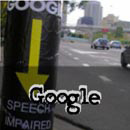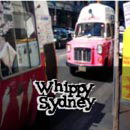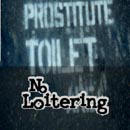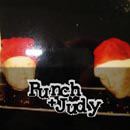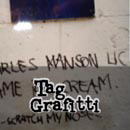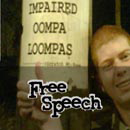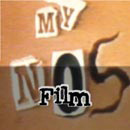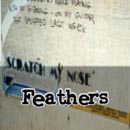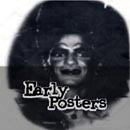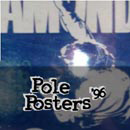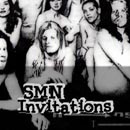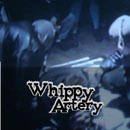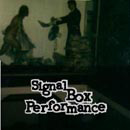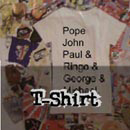SMN Plaques

Scratch My Nose arrived in Santiago only five weeks after the devastating Chilean earthquake of February 2010. With limited Spanish, ably assisted with his translation app on his iPhone, he tried to unravel the complexities of Chilean culture.
Scratch My Nose had lived for extended periods overseas in the past including in Beirut for 3 years, where initially the bombardment sound of car horns, the call to prayer and the chatter of its people allowed some sort of understanding of where you were located. In Santiago, everything seemed familiar: cars with revolving wheels and see-through windows, roads with seemingly set directions and pharmacies on every street corner. But even with all of these familiarities, one felt disoriented. Chile is much more complex than it first seems.
Scratch My Nose’s handicap of limited Spanish coupled with the complexity of Chile made his investigation and orientation rely on visual pop culture. He would pick up and observe all sorts of cultural artefacts. Political Posters. 33 Buried Miners. Political Magazines. TV info-commercials. Celebrity TV game shows. 16 Year Old girl punk bands. Weird Electronic Music. Football. Street art. football, football and more football. Then came the bombardment of Santiago’s street artworks quickly followed by the plethora of fashion and celebrity magazines in news-stands sitting alongside political satirical magazines which often collaged religious and political leaders in compromising positions. The visual senses were then captured by Chilean icons: cartoon characters used in consumer products, television journalists with eye patches and morning television hosts with two day facial hair while Chilean’s proudly proclaimed that their Pisco Sour was better than that found north of the border. But what permeated this was the emergence of a consumer culture found in Western shopping malls that were filled with Chileans and their newly found disposable income walking out of shopping centres with a multitude of brown cardboard boxes, containing mostly digital televisions. All of this was backdropped with a mixed soundtrack of western pop and rock music hummed and misinterpreted by shoppers and taxi drivers;while young girls stood outside international hotels professing their love for the latest Disney Channel pop star.
Santiago in part, is the perfect place for consumer culture to take the lead of a society, a position traditionally held by the Catholic Church. Chileans have been encouraged to adopt this new spirituality of consumption, where they burn up, replace, and discard at an ever-accelerating rate. Both Scratch My Nose campaigns, the temporal blackboard posters plastered on the streets of Santiago and the ornamental plaques humorous texts discuss this increasing juxtaposition of consumer based culture and its marriage to celebrity which is ‘spun out’ of the manipulative world of corporate advertising and public relations offices.
Using this palette, Scratch My Nose have used key figures from pop culture in Chile, again using the absurd and irreverent to provide, humour and to make a broader social comment on a culture which is at a cross-roads. Imported parts of (consumer) culture such as American styled shopping malls, TV pop music competition shows and Starbuck’s Coffee houses are placed in a hierarchical position above much of Chile’s own past and possible future. This is not to say all imported views are to be rejected - as Chile needs to become more reflective society rather then moving to its default position of 'nationalism' - but it is the question of choice and who is choosing what is imported or what it is mimicked. Scratch My Nose’s posters and plaques are a part pitch - part analysis - part review - a love letter of sorts to Chile's adoption of ‘other’ cultures where his irreverent humour marries the Catholic Church with The Beatles; while Bilz and Pap (a soft drink whose two flavours are represented by cartoon characters Bilz and Pap) end up taking the Cola vs Pisco Cola taste test challenge.

